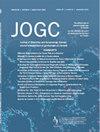The Effect of Self-Sampling or Clinician-Based Sampling on Anxiety in Cervical Cancer Screening Among Women: A Randomized Controlled Trial
IF 2.2
Q2 OBSTETRICS & GYNECOLOGY
引用次数: 0
Abstract
Objectives
This study aimed to determine the effect of self-sampling or clinician-based sampling on anxiety in cervical cancer screening among women.
Methods
This study was conducted between October 2022 and December 2023 in a family health centre among women aged 30–65 years who had not undergone cervical cancer screening in the last 5 years, were sexually active, and could read and write Turkish. Participants (N = 110) were randomly divided into 2 groups (1:1): the experimental group (n = 55) and control group (n = 55). Women in the experimental group were trained before the procedure and were allowed to take samples from the vaginal area on their own. The women in control group were sampled from cervical region by the clinician. Both groups were pretested before the procedure using the “descriptive information form” and “state anxiety inventory” to measure anxiety. After the sampling procedure, a post-test was administered to the experimental and control groups using the state anxiety inventory. Statistical Package for Social Sciences for Windows 24.0 was used for the analysis and P < 0.05 was considered statistically significant.
Results
Results showed that the descriptive characteristics of the groups were distributed homogeneously. In the pretest, there was no significant difference between groups in terms of anxiety levels (P > 0.05), whereas in the post-test, it was observed that anxiety levels of women in experimental group were significantly lower than those in the control group (P < 0.05).
Conclusions
This study observed that women’s self-sampling during cervical cancer screening reduced their anxiety level.
自我抽样或临床抽样对女性宫颈癌筛查中焦虑的影响:一项随机对照试验
前言:本研究的目的是确定自我抽样或临床抽样对宫颈癌筛查中女性焦虑的影响。方法:研究于2022年10月至2023年12月在一家家庭健康中心进行,研究对象为30-65岁的妇女,她们在过去五年内没有接受过宫颈癌筛查,性生活活跃,会读写土耳其语。将110名参与者随机分为两组(1:1),实验组(N = 55)和对照组(N = 55)。实验组的妇女在手术前接受了训练,并被允许自己从阴道区域取样。对照组妇女由临床医生从宫颈部位取样。两组患者术前均采用“描述性信息表”和“状态焦虑量表”进行焦虑程度的预测。抽样结束后,实验组和对照组分别采用“状态焦虑量表”进行后测。采用SPSS (Statistical Package for Social Sciences) Windows 24.0软件进行分析,P < 0.05为差异有统计学意义。结果:结果显示各组描述特征分布均匀。在前测中,各组间焦虑水平差异无统计学意义(P < 0.05),而在后测中,观察到实验组女性焦虑水平显著低于对照组(P < 0.05)。结论:本研究观察到,妇女在宫颈癌筛查期间的自我抽样降低了她们的焦虑水平。
本文章由计算机程序翻译,如有差异,请以英文原文为准。
求助全文
约1分钟内获得全文
求助全文
来源期刊

Journal of obstetrics and gynaecology Canada
OBSTETRICS & GYNECOLOGY-
CiteScore
3.30
自引率
5.60%
发文量
302
审稿时长
32 days
期刊介绍:
Journal of Obstetrics and Gynaecology Canada (JOGC) is Canada"s peer-reviewed journal of obstetrics, gynaecology, and women"s health. Each monthly issue contains original research articles, reviews, case reports, commentaries, and editorials on all aspects of reproductive health. JOGC is the original publication source of evidence-based clinical guidelines, committee opinions, and policy statements that derive from standing or ad hoc committees of the Society of Obstetricians and Gynaecologists of Canada. JOGC is included in the National Library of Medicine"s MEDLINE database, and abstracts from JOGC are accessible on PubMed.
 求助内容:
求助内容: 应助结果提醒方式:
应助结果提醒方式:


